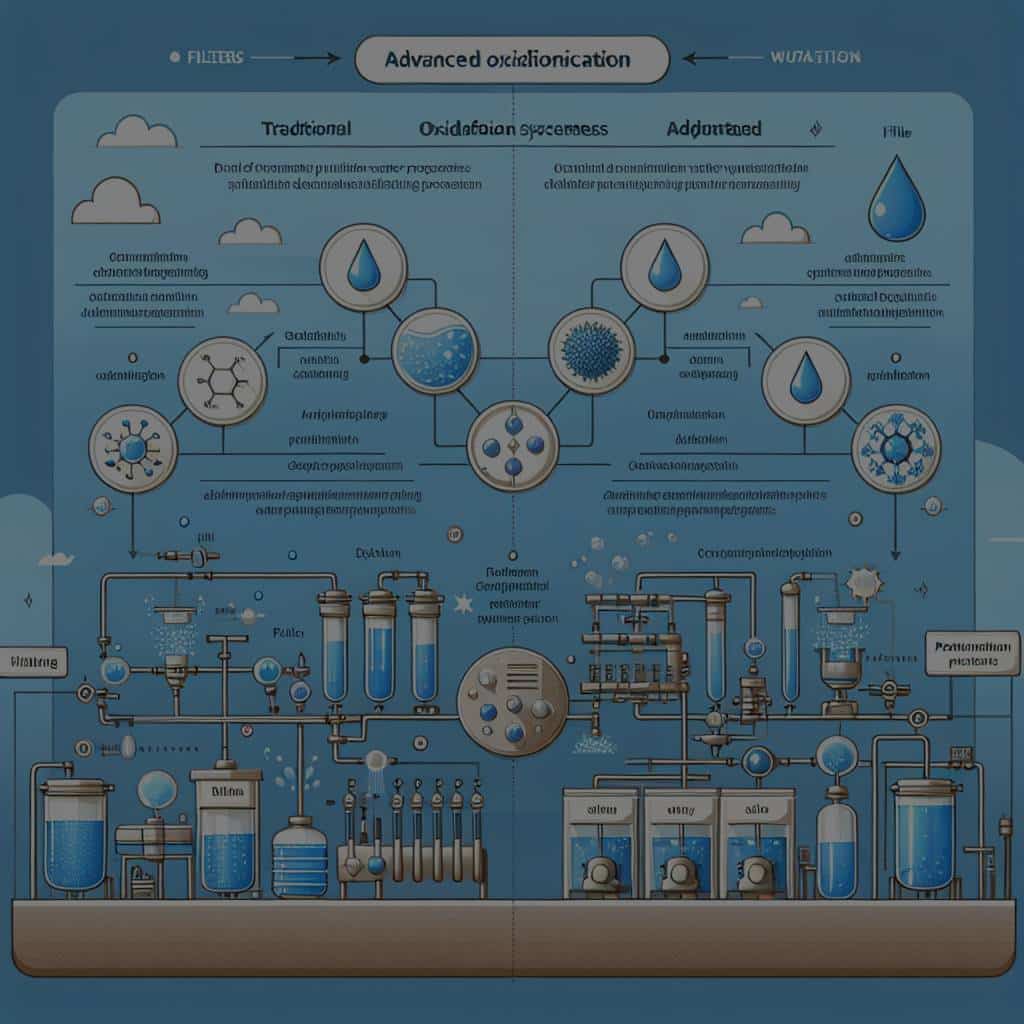What’s the Impact of Advanced Oxidation Processes on Water Purification Systems?

The world, as we know it, is witnessing tremendous advancements in various fields, and one of them is water treatment. Advanced Oxidation Processes (AOPs) are increasingly being used in water treatment systems to degrade organic compounds and remove pollutants. This article will delve deeply into the role of AOPs in water purification systems, shedding light on why they are considered a beacon of hope in the quest for cleaner water.
The Role of Advanced Oxidation Processes in Water Treatment
Advanced Oxidation Processes (AOPs) are a set of techniques used in water treatment that facilitate the oxidation of organic and inorganic compounds. In layman’s terms, they help in breaking down harmful substances in water, making it safer for consumption and use.
This might interest you : Can AI-Enhanced Gene Sequencing Accelerate Personalized Cancer Treatment?
The use of these processes in water treatment has gained considerable attention amongst scholars. Numerous studies available on Google Scholar and CrossRef reveal that AOPs are highly effective in the degradation of various pollutants found in wastewater. They achieve this by generating powerful oxidizing agents capable of initiating the oxidation process.
Understanding the Fenton Process
One of the most widely used AOPs is the Fenton Process. The Fenton process is a form of advanced oxidation that uses a mixture of hydrogen peroxide and iron catalysts to oxidize contaminants in water. The combination of these two elements generates a powerful oxidant, hydroxyl radical, which is capable of degrading a wide range of organic pollutants.
Have you seen this : How Might Quantum Cryptography Impact the Security of Mobile Payments?
According to a study indexed on CrossRef, the Fenton process is highly effective in the removal of pharmaceutical compounds, pesticides, and other organic pollutants from wastewater. The process is also advantageous because it operates under ambient conditions, making it a cost-effective method of water treatment.
Harnessing the Power of Light with TiO2 Photocatalysis
Another essential AOP is photocatalysis using titanium dioxide (TiO2). In this process, TiO2, when exposed to ultraviolet light, generates hydroxyl radicals and superoxide ions, which are capable of oxidizing organic compounds present in water.
TiO2 photocatalysis is particularly effective in the removal of micro-pollutants from wastewater. Scholars on Google Scholar have published several studies demonstrating the efficiency of TiO2 photocatalysis in degrading dyes, pharmaceuticals, and personal care products in wastewater.
Ozonation: A Promising Advanced Oxidation Process
The use of ozone in water treatment, or ozonation, is another AOP that has shown immense promise. Ozone is a powerful oxidant that can react with a multitude of organic and inorganic compounds.
Ozonation involves the infusion of ozone gas into water to oxidize pollutants. This process is particularly effective in the removal of color, odor, and taste from water, making it aesthetically more pleasing to consumers.
Research available on CrossRef indicates that ozonation is highly effective in the removal of pharmaceuticals and personal care products from wastewater. It has also been found to be successful in degrading endocrine-disrupting compounds, which are known to interfere with hormonal systems in humans and wildlife.
The Impact of AOPs on Water Purification Systems
The incorporation of Advanced Oxidation Processes into water treatment systems has undoubtedly made a significant impact. Their ability to degrade a wide range of pollutants effectively and safely has made them an integral part of modern water treatment systems.
The use of AOPs in water treatment has opened up new possibilities for the purification of water with high levels of pollutants. By harnessing the power of oxidation, we are now able to remove more contaminants from water than ever before. This has led to the production of cleaner, safer water for both industrial use and human consumption.
However, as with any technology, AOPs have their challenges. These include the need for further research to improve their efficiency and reduce their operational costs. Despite these challenges, the future of water treatment looks promising with the continued development and application of Advanced Oxidation Processes.
The Photo Fenton Process: An Emerging AOP
The Photo Fenton process is a variant of the traditional Fenton process, combining the power of light with the oxidative capabilities of hydrogen peroxide and iron. The process uses ultraviolet or solar light to activate the Fenton reaction, enhancing the generation of hydroxyl radicals and leading to more efficient oxidation of pollutants.
The addition of light in the Photo Fenton process makes it highly effective, particularly in the treatment of highly contaminated wastewater. This process has been successfully used to degrade a wide assortment of pollutants including dyes, pharmaceuticals, and pesticides. According to research indexed on Google Scholar, CrossRef, and PubMed, the Photo Fenton process shows remarkable promise for wastewater treatment, surpassing the traditional Fenton process in terms of pollutant degradation capability.
The Photo Fenton process, like other AOPs, operates under ambient conditions, making it a cost-effective option for water treatment. Despite its advantages, there is a need for more research to fully understand its operational parameters and optimize its efficiency. The future of the Photo Fenton process in water treatment systems looks bright, with ongoing studies seeking to improve its performance and applicability.
The Future of AOPs in Water Treatment
AOPs have undeniably revolutionized water treatment, providing efficient and effective solutions to the challenge of water pollution. By integrating Advanced Oxidation Processes into water treatment systems, we have made substantial progress towards achieving clean, safe, and drinkable water.
These advanced processes, including the Fenton process, Photo Fenton process, TiO2 photocatalysis, and ozonation, have proven their worth in the degradation of diverse pollutants, ranging from pharmaceutical compounds to endocrine-disrupting chemicals. The studies indexed on platforms like Google Scholar, CrossRef, and PubMed confirm the effectiveness of AOPs, giving us hope for even cleaner water in the future.
However, the journey towards perfecting these processes is not without challenges. There is a need for continuous research and innovation to enhance the efficiency of AOPs, reduce their operational costs, and minimize any associated environmental impacts. The goal is to make these processes more accessible and affordable for water treatment facilities worldwide.
In conclusion, the impact of Advanced Oxidation Processes on water purification systems has been profound, pushing the boundaries of what is achievable in water treatment. As we continue to invest in research and development, we anticipate more breakthroughs in this field, paving the way for cleaner water and a healthier planet. As of today, the 7th of March, 2024, the future of water treatment is bright, largely thanks to the continued development and application of AOPs.
